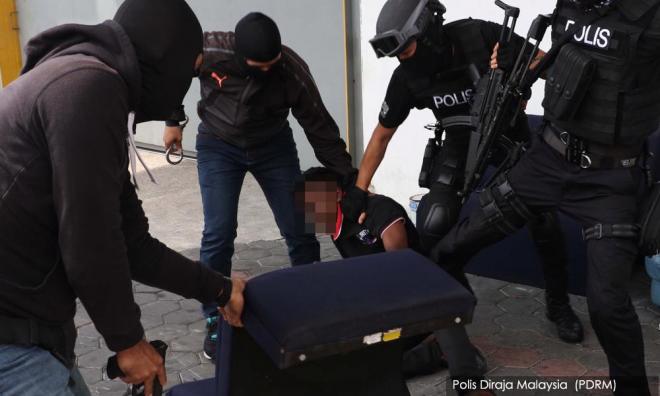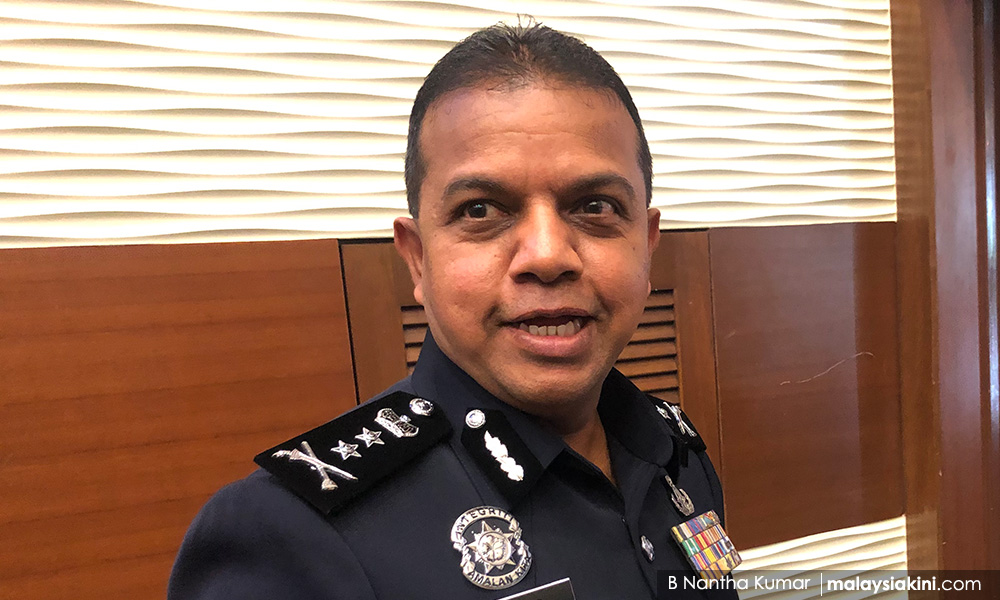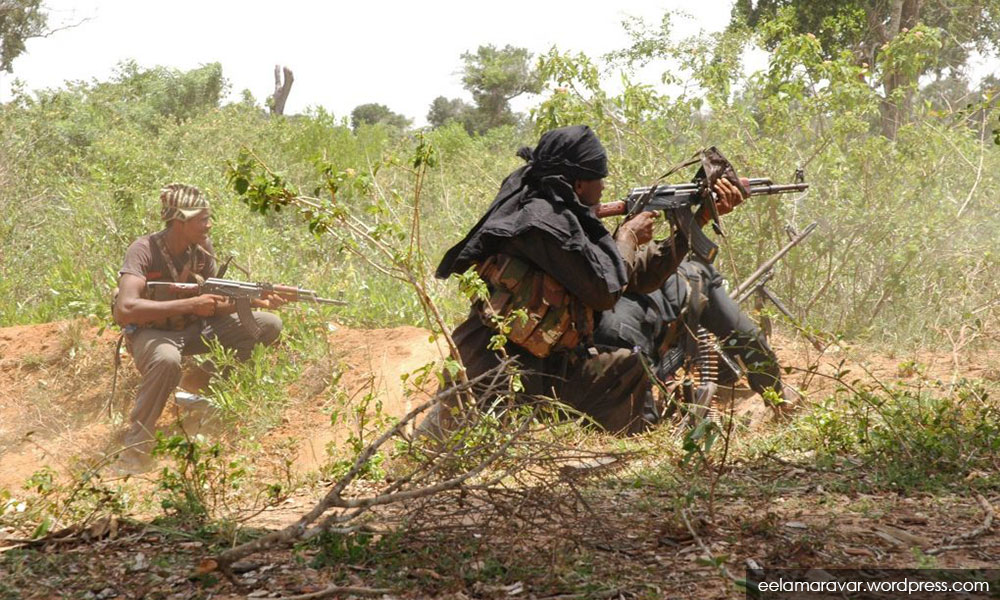
“It’s a new game in the new Malaysia, which could potentially escalate ... I hate to say this. Isis may capitalise on the perception that Islam is under threat in Malaysia.”
- Ahmad El-Muhammady, a lecturer at the International Islamic University Malaysia
The above quote is in reference to large-scale attacks by an IS influenced “wolf pack” foiled by the state security apparatus during the holy month of Ramadan earlier this year.
Inspector-General of Police Abdul Hamid Bador said: “This operation was launched after our Special Branch’s counter-terrorism division detected an Isis wolf pack cell… that planned to assassinate four VIPs and launch large-scale attacks on Christian, Hindu and Buddhist places of worship, as well as entertainment centres in the Klang Valley.”
Also of interest, the IGP remarks that the attacks were planned to avenge the death of Muhammad Adib, a fireman who died from injuries sustained in a riot at a Hindu temple in Subang Jaya on the outskirts of Kuala Lumpur last year.
Much like the case of Singaporean businessman Mohamed Kazali Salleh, who was arrested by Singaporean and Malaysian security forces for funding a foiled attack on places of worship in this country, all these are merely a continuing narrative of religious extremism in this country.
In the Singaporean case, Farlina Said, an analyst from Malaysia’s Institute of Strategic and International Studies (Isis), said: “First, it indicates that Daesh is attempting to regroup. Second, this suggests that the Malaysian fighters in Syria still see Malaysia as a target.”

This falls in neatly with public comments made by Ayob Khan Mydin Pitchay (above), head of the Malaysian police force’s Special Branch Counter-Terrorism Division about returning IS fighters: “There is a possibility they will escape and go to a third country or return to Malaysia. If they return to Malaysia, it is highly likely they will recruit new members and launch attacks.”
Hence, this idea that the Liberation Tigers of Tamil Eelam (LTTE) is of grave national security concern is misleading and an attempt to create a new narrative of religious extremism for a new Malaysia. This would explain the countless viral social media posts about DAP politicians promoting the LTTE.
Demonising minority groups, politicians and activists as a threat to national security is not something new in Malaysia. Lim Kit Siang argued against the duplicity of the state in 2007, when then attorney-general Gani Patail attempted to link Hindraf with the LTTE in the infamous Batu Caves 31 murder trial:
“The Attorney-General Tan Sri Gani Patail was the first to raise the alleged Hindraf links with terrorists when he deployed it as the 'star' argument at the Shah Alam Sessions Court on Wednesday to oppose the application for bail for the 31 persons charged for the 'attempted murder' of a policeman.
"What was the justification for the attorney-general leading the attack on Hindraf for its alleged terrorist links? Yesterday, Gani said his linking Hindraf to the LTTE in his argument at the Shah Alam Sessions Court on Wednesday was based on a police report. He said: 'Somebody lodged a police report that there is ground that these people have been going out to (establish) contact with this LTTE'."
If someone was planning an attack against the Sri Lankan High Commission, this is a clear-cut case of domestic terrorism. However, the problem with the LTTE dragnet is that it has become a political issue because of the behaviour of politicians and the state security apparatus, not to mention the grey area of Malaysian politics where extreme political rhetoric, personalities and religious groups collide in a deliberate attempt to manufacture narratives to galvanise the Malay base.
This idea of a White Paper on the LTTE is the height of legislative duplicity. It does not matter if people believe that the LTTE is an existential threat to this country. What matters is if you can make a factual argument that the LTTE threat warrants the national security scrutiny and public scrutiny, that warrants governmental intervention in the form of a White Paper or the use of repressive laws like Sosma.

Elements of the media have made much of the links between a Tamil Nadu “politician”, Senthamizhan Seeman, a known LTTE sympathiser, and local politicians. Seeman has made extreme statements in Canada, not to mention various attempts to “revive” the defunct LTTE, and is a third-grade actor and first-grade charlatan whom nobody takes seriously. He is most probably fleecing money from gullible people who think they are part of some grand revival of a lost cause.
The same could not be said of Dr Zakir Naik, who is operating as a state actor and under charges of money laundering and instigating religious violence. Now, the authorities are considering whether to blacklist Seeman from entering this country, which is strange because if he poses the kind of threat they claim, why not just ban him outright?
When it comes to hateful rhetoric, the state security apparatus has banned Zakir from speaking on certain issues, although they allow him free movement in this country. Hence, this idea that politicians who have links with Seeman, are suddenly a threat to national security, is ludicrous, while politicians, religious figures and Mujahid Yusof Rawa, Harapan’s religious czar, find someone like Zakir “inspiring”.
A Muslim NGO was contributing funds to Syrian “refugees”, doing so through the known proxies of a group listed as a terror organisation by the United Nations. When I told them this fact, they said they did not care. What they meant was that the funds were going to a good cause and it did not matter to them who it went through. In other words, it is not a question of “terrorist” organisations, but rather which terrorist organisations are sanctioned by the state, and which causes are deemed acceptable.
When the state security apparatus makes these claims of attempts to revive the LTTE, having propaganda material or paraphernalia, all this is hypocritical, especially when it comes to how some Muslims in this country fund organisations and support causes on international terror lists.
What we are talking about here is a manufactured outrage against a defunct terror group, with the aim of mobilising public sentiment against an imaginary existential threat. Do not get me wrong. If the LTTE were responsible for the kind of mayhem around the region as other terror groups, nobody would have an issue.
The problem here is that, so far, the state security apparatus is using Sosma as if they are digging a dry well, hoping to gather more information which would make the threat seem a clear and present danger.
Consider how the state security apparatus has managed to foil threats from IS-inspired lunacy. Consider how quickly they move when it comes to known terrorist organisations that view Malaysia as a soft target.
My belief is that what the state is attempting to do is create a counter-narrative to the issue that is the existential threat to this country. Attempting to generate Hindu phobia among the majority is politically more advantageous than addressing the extremist problem facing this country.
The far-right and the deep Islamic state are rejoicing.
S THAYAPARAN is Commander (Rtd) of the Royal Malaysian Navy. A retired barrister-at-law, he is one of the founding members of Persatuan Patriot Kebangsaan. - Mkini


No comments:
Post a Comment
Note: Only a member of this blog may post a comment.